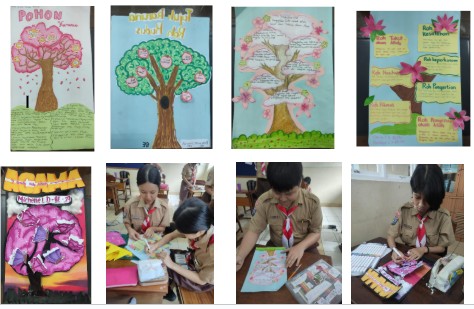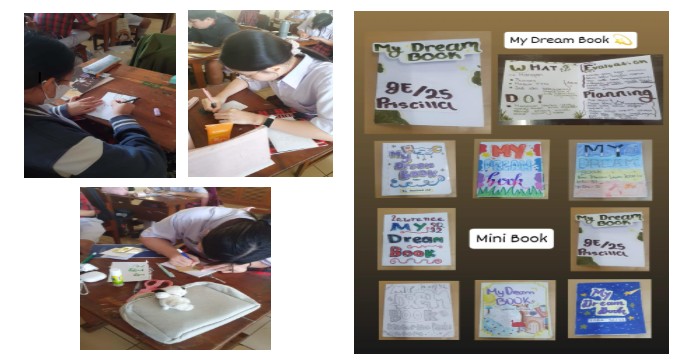Article Detail
INFLUENCE OF GLYCERINE CONCENTRATION ON MAKING BIOPLASTIC SPOONS
INFLUENCE OF GLYCERINE CONCENTRATION ON MAKING BIOPLASTIC SPOONS
Agatha Rachel Dewanto Lindsay Lauryn Chandra
Supervisor :AgustinaTitinWahyuningsih, S. Pd.
SMP TarakanitaGadingSerpong, Tangerang, Banten, Indonesia, agathaa0403@gmail.com , lindsaylaurynchandra07@gmail.com
LPB Environment Banten 2019
A. INTRODUCTION
We make this bioplastic spoon aiming to replace the spoon made of plastic, because as we know our daily activities use plastic that is not environmentally friendly, thus causing pollution.
Plastic itself takes about 100-400 years to decompose completely. If we use plastic continuously, then our earth will be contaminated by plastic. As in Bantargebang TPA, Bekasi, where mounting rubbish is quite alarming. The people there are also disturbed by the existence of such rubbish. So we must look for alternatives, namely plastic that is easily biodegradable, and easily made, and certainly environmentally friendly.
Why do we choose spoons?
We want to start from the simple step of making bioplastic spoons. In our lives there are already stainless spoons, but what we want to change is the use of plastic spoons in various restaurants.
Based on research conducted by Jenna
R. Jambeck of the University of Georgia, in 2010 there were 275 million tons of plastic waste produced worldwide. Around 4.8-12.7 million tons of them are wasted and pollute the sea.
As seen in the statistics above, the use of plastic from year to year is increasing.
So this is our goal in making bioplastic spoons.
B.PREVIOUS RESEARCH AND INNOVATION
A businessman from Bali, Kevin Kumala, once made the bioplastic from cassava. We were inspired by him to make this bioplastic spoon.
Our innovation is making bioplastic spoons from tapioca flour and we add natural dyes.
C.THEORITICAL REVIEW
1.Glycerin
Glycerin is a thick liquid that is colorless and tastes sweet. Glycerin has a high boiling point and freezes in the form of pasta.
Glycerol in its pure form is known as Liquid Glycerin.
Glycerin Properties:thick, colorless,it tastes sweet, boiling point 290˚C
Glycerin Chemical Formula: C3H5 (OH)3
2.Tapioca Flour
Tapioca flour contains cellulose which functions as a gelling agent that functions to compact the spoon.
3.Vinegar
Vinegar is also called acetic acid, with the chemical formula CH3OOH
The function of vinegar in this experiment is to brighten the color
4.Water
The chemical formula of water is H2O
The function of water in this experiment is dissolving
D.RESEARCH METHODS : TRIAL The ingredients are :
1.Glycerin
2.Vinegar
3.Tapioka Flour
4.Mineral water
5.Natural dyes (Suji's leaves, carrots, etc.) The tools are:
1. Mold spoon 2 tablespoons
3.Spoonfuls
4.Frying Pan / Pan
5.Stove
The steps to make a spoonful of bioplastic are:
1.Prepare 1 tablespoon of tapioca flour
2.Prepare 3 teaspoons of drinking water
3.Ready glycerin (the less glycerin used, then the more solids produced.)
4.Enter all the ingredients above into the pot
5.Heat with padded and thick thickened
6.After being released, input the printing spoon
7.Leave about 1-2 days until hard
Trial comparison 1:
Glycerin: vinegar / lime: tapioca flour: water 1 : 1 : 2 6
Trial comparison 2:
Glycerin: vinegar / lime: tapioca flour: water 2 : 1 :10 16
E.RESULTS
Uses 10% of glycerin: The resulting substance is rather plastic, not resembling the actual shape of a spoon.
Uses 6, 9 % of glycerin: The shape of the substance produced already resembles a spoon that is solid and strong.
F.CONCLUSION
Making this bioplastic spoon is very easy, and the ingredients are also cheap enough to get. But we need time to make this bioplastic spoon until maximum results.
From now on let's instill your concern for the environment, by trying to make this bioplastic!
G.REFERENCES
https://id.wikihow.com/Easy-Create-Bioplastic
-
there are no comments yet






